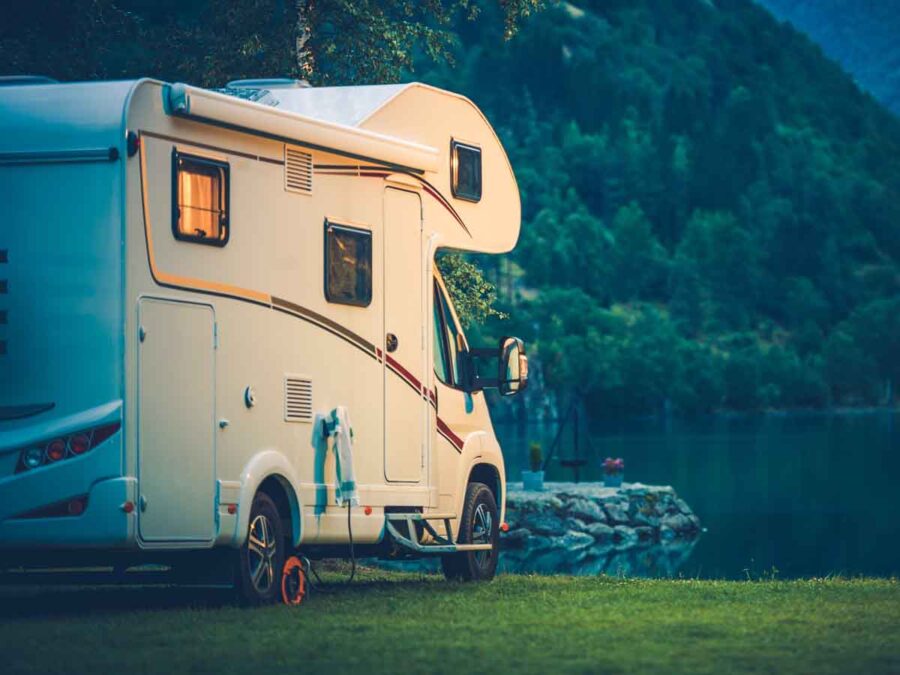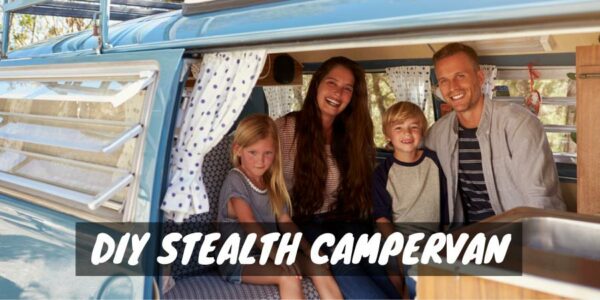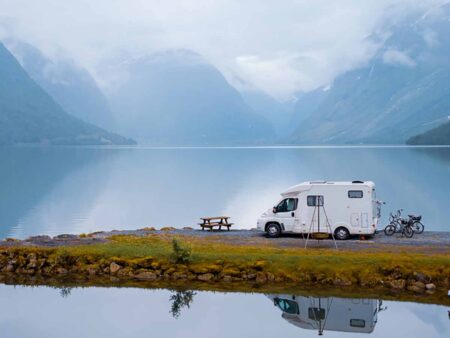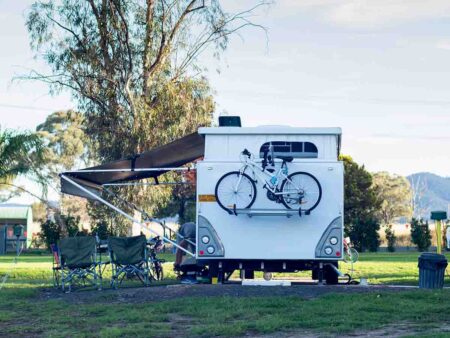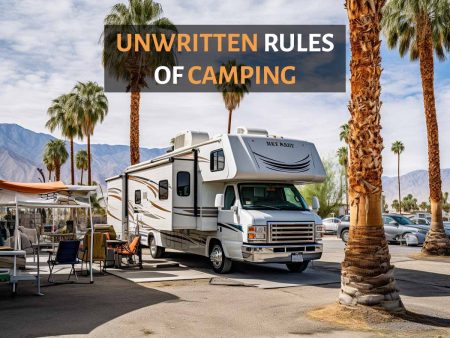Stealth camping is great, but crowds at campgrounds or far-off locations of RV parks often detract from the fun. For campers in cars and RVs, the solution is often to boondock, but even these spots are gaining popularity and can also be problematic for various reasons.
So how can you camp for free, in great locations, away from campground crowds?
The answer is stealth camping.
Stealth camping is a sneaky way to park overnight in areas not established for such events. You park, sleep, and leave the following day with no one even aware that you were there.
To teach you everything about stealth camping and get helpful tips on doing it right, we put all the details inside this stealth camping guide.
Whether you have an RV or love to car camp, you’ll find this guide a valuable tool to avoid campgrounds when it suits you and still enjoy a peaceful night’s sleep anywhere you travel!
Keep In Mind
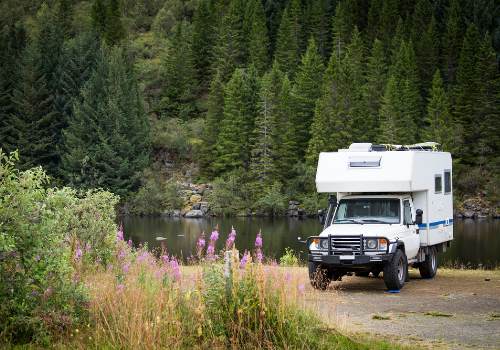
Stealth camping is not boondocking. While you will be without shore power, water hookups, and other typical amenities found at a campground, you are not camping in locations made for overnight guests.
Places such as BLM land or hitting the parking lot of a Walmart or Cabela’s to grab some sleep are not the same as stealth camping.
We have done our share of stealth camping over the years.
All of us agree that when someone says stealth camping, we immediately think of quiet back roads in the country, street parking in the suburbs, or even tucking away in a major city’s entertainment district where they allow overnight parking of vehicles.
Because you’re trying to blend into your surroundings and not grab the attention of residents or law enforcement, you keep a low profile and never set up camp like you would at a standard RV park or off-grid camping location.
The Benefits of Stealth Camping
Stealth camping isn’t necessarily comfortable, but it does allow you to:
- Park where you want
- Avoid campground fees
- Get sleep or rest when you need it
- Allows you to visit places that aren’t RV-friendly
- Have more privacy and quiet time
- Do not panic when you can’t find an open RV park or campground to stay
- Get a thrill every time you “get away with it”
RVing and camping are booming at the moment, so having another camping option in your back pocket can alleviate any stress when campsites are booked solid for months, but your vacation time isn’t flexible.
Along with more people seeking out traditional campgrounds, costs for overnight stays are increasing as well. Add in higher gas prices, and you’ll see that what was once an affordable way to travel and experience outdoor adventures can now take a toll on your wallet.
Stealth camping is free, so being able to put the average $45 RV park nightly fee to more fun pursuits is a game-changer for budget-conscious travelers.
We’ve met several people who travel full-time and exclusively stealth camp in their well-appointed camper vans, while most others only use them for occasional overnight stops.
While major tourist cities, such as Las Vegas, have many RV parks within city limits, most large metropolitan areas place campgrounds on the outskirts of town. Stealth camping allows you to hit the hot spots and safely walk back to your vehicle to sleep.
If you have the right off-road camping vehicle, you can even stealth camp in dispersed camping locations to get away from the main campsites people commonly use. You can sneak off into the brush or woods on BLM or WMA land for a tranquil getaway and move locations daily to avoid detection.
Is Stealth Camping Legal?
We often get this question and admit that stealth camping is not legal in most instances.
Most people who stealth camp are not looking up all the local laws on overnight parking in each area they visit, but across the board, most cities and towns do not allow people to sleep overnight in a vehicle outside of designated campgrounds.
We suggest you take the time to research parking laws where you plan to stealth camp, as getting caught can lead to fines or even arrest for trespassing. Federal lands have different rules versus state or local ordinances for overnight parking, so the more you can learn about each location, the better.
Within urban areas, you may find specific streets that don’t allow overnight parking at all or only during certain hours. You’ll typically see signs with such information posted, but not always, which could lead to a tow truck waking you from your sleep!
If you plan to stealth camp often, we suggest you start a notebook to document your overnight stops and write down all the details about the stay and whether or not it’s a location you want to return to.
We find that keeping good locations to yourself is the only way to continue stealth camping effectively.
Please take any stealth camping locations you find online with a grain of salt.
Many campers like to share great spots with the internet, and then the place is overrun with people. More traffic quickly alerts the authorities, and they’ve shut the area down before you ever arrive.
Scout around where you plan to park and look for no trespassing, no parking, or private property signs.
Those signs may be partially hidden by foliage in more rural areas, but it doesn’t mean an angry property owner with a gun won’t come banging on your door in the middle of the night telling you to get out.
The point of stealth camping is not getting noticed, so the first order of business is always to choose a location that isn’t violating parking or trespassing laws.
6 Stealth Camping Tips
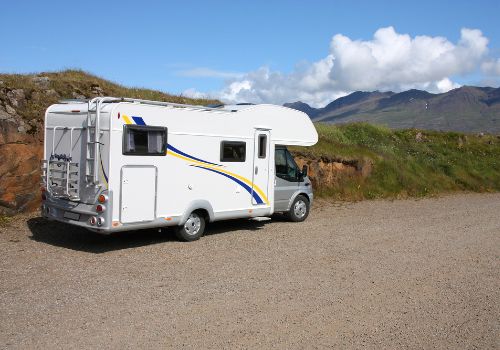
1. Have the Right RV or Vehicle
Stealth camping is much easier if you travel in a small RV like a Class B motorhome or a conversion van. Many expert stealth campers transform a standard small box truck into a home on wheels, as it can blend into urban surroundings without gaining much attention.
SUVs and minivans are other good stealth camping vehicles, as it’s easier to “hide” in the rear section to sleep once you fold down the seats. You can fit these vehicles into a standard parking space, so you can opt to stay overnight in a lot of any 24-hour business or on side streets that allow parking and not gain notice.
If you’re trying to stealth camp in a larger motorhome or travel trailer, you will have more difficulty.
Our best advice is to search for towns that allow residents to park a camper on residential streets for a night. You can pull in after dark, get some sleep, and pull out early enough that residents aren’t wondering over their morning coffee what neighbor got a fancy RV.
Another option is to find a business with a large open parking lot and hope for the best. Cameras are everywhere now, and owners may get an alert or be aware you’ve pulled onto their property.
If you stay inside your RV and don’t make a mess or a fuss, chances are they won’t run you off. Local authorities driving past may think the owner gave a friend permission to park there.
Do consider that travel trailers are not good stealth camping recreational vehicles, as the need to move from the trailer to the tow vehicle to sleep and then leave the area exposes you to more attention.
2. Keep Your Vehicle Clean and Bland
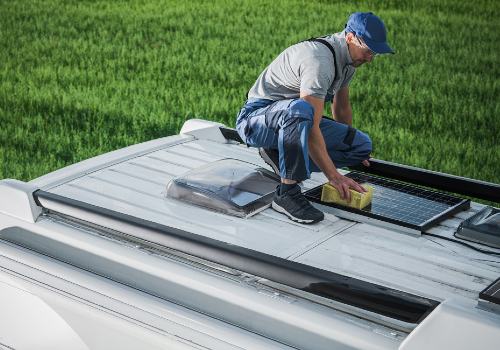
The best stealth campers blend into their environment.
You don’t want to attract attention by having a filthy vehicle or one with a lot of body damage. Keep your campervan or car clean and neat.
More importantly, don’t go crazy with the exterior color or design. No one wants to see a van with a kaleidoscope of colors sitting anywhere.
Clever stealth campers avoid the creepy van look by sticking to a solid color exterior if their campervan has few windows.
We know of one urban stealth camping pro that has several different company names printed on magnetic signs. The guy slaps on “Joe’s Plumbing” or “Avery’s Florist,” depending on where he plans to sleep, so locals think it’s just a work van.
Overall, keep your camper or vehicle as bland as possible. Avoid bumper stickers or covering windows with anything other than those basic pop-open sun shades.
If it stands out, people will look harder. If they notice someone is camping or living in the vehicle, they are more likely to alert authorities.
3. Do Pre-Parking Prep
The last thing you should ever do once you park for the night is go in and out of your vehicle.
You can get away with parking and heading into a nearby restaurant to grab a bite and hit the bathroom, but you don’t want to cause a commotion that will bring attention to your situation.
If you need to prep your vehicle for sleeping, do it at another location before you park for the night.
Lay bedding, arrange snacks or water, check your phone, or brush your teeth beforehand to keep a lower profile once you arrive at your parking spot.
If you need to use your phone after you park, cover up with a blanket to hide the light. If people suddenly see a light pop up inside a parked vehicle after dark, they will know someone is inside and may call the police if it looks suspicious.
4. Arrive Late and Leave Early
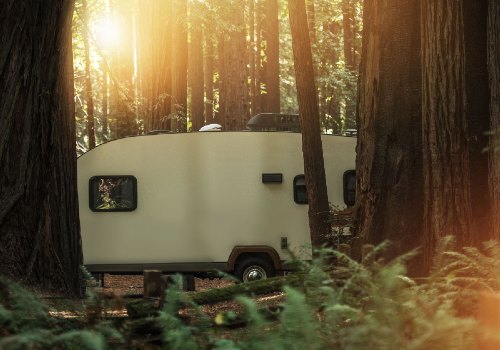
Whenever you stealth camp in populated areas, you need to make your stay as brief as possible.
Arrive as late as you can. After dark, it will attract less attention than during the day, especially if your vehicle is dark in color.
Don’t linger in the morning. Move your vehicle to a different location as soon as possible.
Want to Connect With a Community of Over 1,078 RV Enthusiasts?
Most stealth campers like to hit a coffee shop or Walmart in the morning to get a drink and use the bathroom.
5. Don’t Attract Attention and Leave No Trace
The dictionary defines the word “stealth” as “the act of moving, proceeding, or acting in a covert way.”
A stealth camper needs to be quiet. This rule means never playing music without earphones, running a generator, talking loudly, rummaging around the vehicle, slamming doors, making a campfire, or causing a racket.
You should also never, ever leave a mess behind.
Please don’t empty your urine collection jug on the sidewalk or grass, as it will stink up the place. Pack up all garbage and dispose of it properly.
It takes minimal effort to keep your parking spot clean. You can even pick up any garbage left behind by others and do the environment a favor!
6. Be Ready for a Quick Getaway
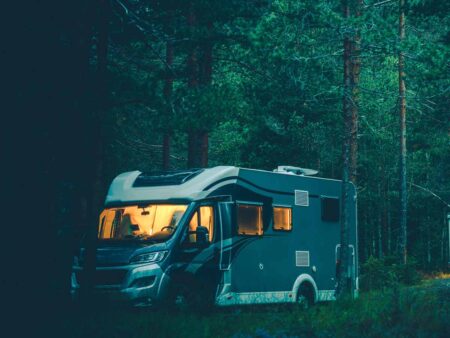
Lastly, do think about your safety. Not every stealth camping location will be ideal.
Keep all doors locked and have keys and any protection weapon in a spot where you can quickly grab them. Ensure you can pull directly out of your parking spot and exit the area in more than one direction.
Some areas after dark become gathering points for the local homeless or rowdy teenagers looking for fun. What was a quiet back street could be very different after midnight.
If you ever feel uneasy, always move your vehicle immediately. You won’t be able to sleep anyway if you’re nervous.
Stealth Camping Wrap-Up
Is stealth camping right for you?
We can’t answer that question, but we hope this guide helps you understand what steal camping is and how it can benefit you on your next camping trip.
Stealth camping takes a bit of practice before you get the hang of it, and it does provide a certain thrill not found when boondocking or staying at an RV park.
If you’re game, give it a try, especially if you have a small recreational vehicle that’s easier to maneuver and park in different terrain.
When you learn to stealth camp, you can add another notch to your camping and RVing belt and be ready for new adventures!
Related Questions
- What are the key differences between stealth camping and boondocking?
Stealth camping involves setting up a temporary camp in an area without attracting attention, often in places where camping is not typically permitted and requires concealment and minimal footprint.
On the other hand, boondocking, also known as dry camping, usually pertains to RV camping in remote areas without amenities like water, electricity, and sewer hookups, where camping is generally allowed, but resources must be self-supplied.
- How can one ensure safety while stealth camping?
Stealth camping safety can be ensured by choosing a discreet location that’s not on private property or in restricted areas, setting up camp late and leaving early to avoid detection, and minimizing noise and light.
It’s also important to follow “Leave No Trace” principles, which include packing out all trash, not disturbing wildlife or vegetation, and avoiding the creation of new campsites when possible.
- What are some ideal vehicles for stealth camping?
Ideal vehicles for stealth camping are typically those that blend in with their surroundings and don’t draw attention.
This includes converted vans such as the Mercedes Sprinter or Ford Transit, small RVs, or even inconspicuous cars with room for a sleeping setup, like station wagons or SUVs.
- What are the potential legal implications of stealth camping?
Stealth camping, or camping in areas without explicit permission, can potentially lead to legal consequences such as trespassing charges, fines, or even jail time, depending on local laws and regulations.
It’s important to research the laws in the area you plan to camp, as some places may have strict regulations against unauthorized camping, while others may be more lenient or have designated areas for such activities.
"Man cannot discover new oceans unless he has the courage to lose sight of the shore."
-- Andre Gide

